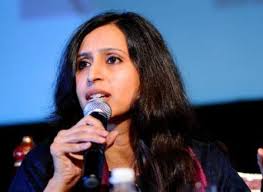Mumbai, Mar 8: A day after the Enforcement Directorate registered a money laundering case against Yes Bank founder Rana Kapoor and raided his premises, he was taken to the agency's office in Mumbai on Saturday for further questioning.
Kapoor, who was grilled by central agency's officials on Friday night at his Samudra Mahal residence in Mumbai, was shifted to the ED office in the metropolis around 12.30 pm.
ED officials said Kapoor was questioned throughout the night, with some rest time.
A senior ED official connected with the probe told IANS: "Kapoor will be questioned about Yes Bank loans to Dewan Housing Finance Limited (DHFL)."
The official said that during searches a lot of incriminating documents were found and the agency wanted to grill him on his links with DHFL promoters and other companies.
Kapoor's alleged role in the disbursal of loan to a corporate entity and kickbacks reportedly received in his wife's bank account are also under probe.
The ED had filed the money laundering case against Kapoor and raided his residence, apart from issuing a look-out circular so that he does not flee the country.
The ED registered a money laundering case against Kapoor as a continuation of its probe against the DHFL wherein it was allegedly found that Rs 12,500 crore was diverted to 80 shell companies using one lakh fake borrowers. The transactions with these shell companies date back to 2015.
An ED official in New Delhi told IANS that the DHFL probe revealed that funds diverted by the DHFL originated from Yes Bank.
He said that the searches at Kapoor's residence on Friday night were meant to find out any irregularity in grant of loans to the DHFL by the Yes Bank.
The ED has accused Kapil and Dheeraj Wadhawan of DHFL of purchasing shares in five firms -- Faith Realtors, Marvel Township, Abe Realty, Poseidon Realty, and Random Realtors -- after which they were amalgamated with Sunblink.
The outstanding loans of these five firms, totalling around Rs 2,186 crore till July 2019, were allegedly appropriated onto the books of Sunblink to cover up the diversion of loans acquired from DHFL.
The ED's action comes after the RBI superseded Yes Bank Board for 30 days and appointed an administrator, putting a cap of Rs 50,000 on withdrawals by account holders for a month.
The RBI said that the bank's board was superseded "owing to serious deterioration in the financial position of the bank".
Former SBI CFO Prashant Kumar was appointed as administrator of Yes Bank, which has over 1,000 branches and 1,800-plus ATMs across the country.
On Thursday, Union Finance Minister Nirmala Sitharaman said that the bank was on watch since 2017 and developments relating to it were monitored on a day-to-day basis.






Comments
Add new comment